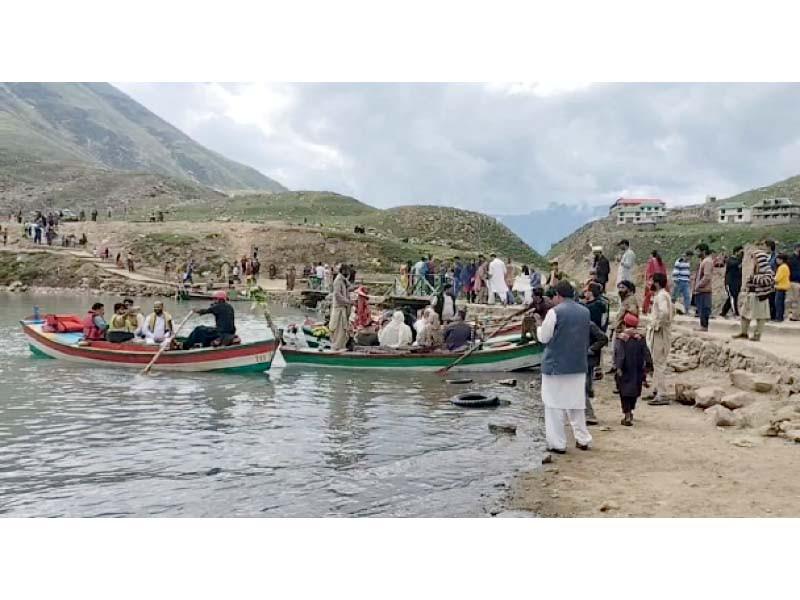Kaghan:
As the rains prior to the monsoon fall gently on the majestic slopes of Malika Parbat, the serene Kaghan Valley undergoes an impressive transformation. Located at 3,224 meters above sea level and framed by snow -covered peaks, the Saiful Malook lake lights thousands of tourists who escape the scorching heat of the plains of Khyber Pakthunkhwa.
More than a scenic destination, the lake is full of legends and poetry. The rain here does not simply cool the air, the spirit awakens. The clouds enter and leave, playing hide and seek with the sun, while wild flowers flourish along the oval coast of the lake, turning the entire landscape into something of a story book.
The name of a Persian prince, the Saiful Malook lake won generalized fame through the Sing Mihammad Bakhsh, Saint Mihammad Bokhsh, Saiful Malook Safi, which tells the prince’s love story for the princess of the Badriul Jamala fairy. The narrative has immortalized the lake in both folklore and national consciousness.
“It’s like entering a dream,” said Ehsanullah Khan, a Pakistani businessman based in Dubai who visits the lake for the fourth time. “I have seen lakes in Switzerland and Canada, but the turquoise waters and the mythical charm of Saiful Malook offer a peace as in any other place.”
The lake, which covers 1.06 square miles and fed by Malika Parbat glaciers, leaves an indelible brand in the hearts of visitors.
Muhammad Ali Syed, general manager of the KP Culture and Tourism Authority, emphasized the immense potential of the northern covered by Lake Pakistan. “Khyber Pakhtunkhwa is home to more than 100 lakes, natural and artificial. From Lake Karambar in Chitral, the highest 33rd in the world, to Mahodand in Swat, we are investing in infrastructure to make these wonders more accessible to time that guarantee ecological sustainability.”
The growing tourist influx to Saiful Malook and the surrounding lakes have also raised concerns about environmental degradation. The garbage, particularly with plastic bags and packaging, has tarnished the reputation once the lake’s pristine. “Saiful Malook is Pakistan’s identity. Seeing trash here is heartbreaking,” said Ehsanullah Khan. He urged the authorities to enforce the strict waste management and parking regulations.
In response, the Kaghan Development Authority, with the support of the Department of Silvestre and the District Administration, has implemented a comprehensive project under the initiative of the Saiful Malook National Park. According to the Divisional Wildlife Officer Salahuddin Khan, the Lake area, which covers more than 12,000 acres, will soon present a dedicated parking installation, cleaner access routes and permanent wildlife management offices under the initiative of protected areas of KP.
“Saiful Malook has been taken under the Law of National Parks of 1975,” said Salahuddin. “This is an important step to preserve its unique alpine ecosystem and fauna and fauna. I came with my family to celebrate my brother’s birthday in Saiful Malook, where we enjoy colorful boat trips on his lake, said Sounds Khayam, a Peshawar teacher, while we talked to the application.
She said that the skin and the search between clouds and sunlight, with rain possibilities, impressed her more. The broader tourist strategy of the KP government includes the development of four integrated tourist areas (ITZ) in Mankiyal, Thandyani, Ganol and Madaklasht with the World Bank assistance.




